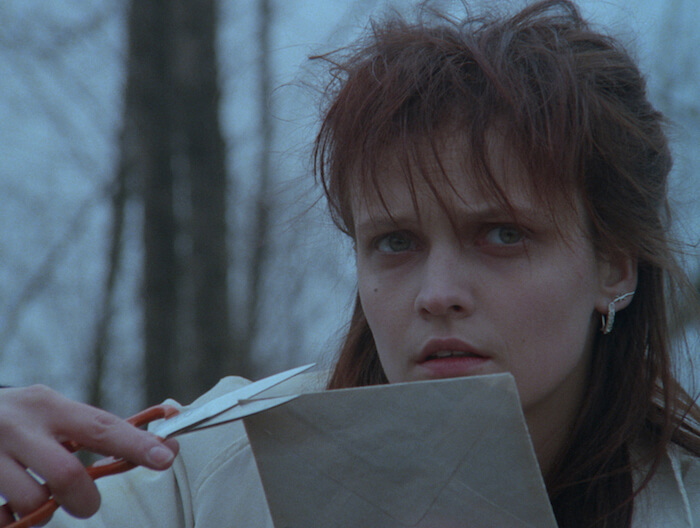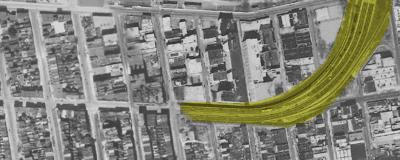“What is a soul?” Kieslowski’s Dekalog


Dekalog
Directed by Krzysztof Kieślowski
September 2-October 6 at IFC Center
One of the great joys of being an artist is hashing out ideas for projects with your peers, seemingly good and bad ideas alike. When lawyer turned screenwriter Krzysztof Piesiewicz approached director Krzysztof Kieślowski with the idea of making a film about the Ten Commandments, the notion seemed preposterous. Through hours and weeks and months of conversations, however, propelled by discussion of everyday life—their own lives—infused with the overarching tension felt in communist Poland, a monumental project began to congeal.
Dekalog materialized in full nearly two years later, ten hour-long films aired on Polish television in 1989, each directed by Kieślowski, with nine different cinematographers. While each episode is loosely based on one of the Ten Commandments, it seems almost ludicrous to try and match each episode to a specific principle; every episode delves into a complex tangle of moral and ethical webs spun around life, death, love, honesty, deceit, faith, trust, and even chance. And while Kieślowski intended to portray the utter uncertainty he observed on a daily basis, he put politics aside in order to address more universal humanistic questions—near the beginning of Dekalog One, the very beginning of this epic, a young boy, after observing a dead frozen dog in the courtyard, asks his father, “Why does someone die? What is dead? What is a soul?”
Welcome.
Each episode of the Dekalog, about to embark on a tour of US theaters in a new Janus Films restoration, focuses on residents of a housing complex; while their lives sometimes intermingle, each episode reveals its own narrative. Linked by themes, however, and by tremendous cinematic storytelling, rife with visual symbolism, each episode unspools a labyrinth of ethical complexities, often with shocking twists, always raising questions for the viewer to deliberate long after the credits roll.
Dekalog Two, for starters, examines the difficult dilemma of a middle-aged woman: her husband is dying, and she’s recently pregnant, but from another man. She consults an older doctor, who lives in the same building and is caring for the sick husband—she wants to know if he’s going to die. If so, she’s going to keep the baby, as conceiving with her husband has proved unsuccessful. But if not, she’ll get rid of it. The audience subsequently learns that the doctor lost his own family during the war. Both wife and doctor face deep, grueling questions of mortality, and the decisions they make yield confounding outcomes.
Another sliver of the series bearing heavily on the notion of mortality is Dekalog Five, which unrelentingly gets bloody. An outsider youth traverses the city streets. He scares away flocks of pigeons convening around a homeless woman, connects with children outside a pastry shop by flinging coffee grinds at the glass that thinly separates them, pokes a small brick from a highway overpass into oncoming traffic below to wreak havoc, all revealed through a palette of sickly yellow, green, and sepia. The kid is trouble. His mission is a taxi ride, and he scores it, only for a gruesome murder to result. Meanwhile, his young attorney, fresh to the job, stands behind the teenager, and appeals the sentence. Even with a perfect performance in court, this attorney’s words won’t change the outcome. It is the exchange the two have in a prison cell, however, that really defies humanitarian expectations. What we learn, and what we bear witness to, is so moving, so unveiling to the power of humanity, not to mention to failed justice and blind bureaucracy, that this film paved way for the expulsion of the death penalty in Poland.
Heavy stuff for certain, but Kieślowski further fuels each episode with unmatched visual fervor, divulging rich layers of symbolism and metaphor. With new ice skates in tow, a professor and his young son in Dekalog One use a computer to calculate how thick the ice on a lake will be. The boy sets out to skate while his father, ignorant of his son’s expedition, works in his office. In a sequence bordering on surrealism, his pages of notes and equations slowly absorb dark blue ink leaking from a mysteriously cracked ink bottle, an almost murderous depiction of information vanishing, and surely a chilling foreshadow. Dekalog Nine begins with a man learning of his permanent impotence—his glovebox keeps opening like a laughing phantasm, revealing a gaping void, and no matter how hard he slams, it won’t stay shut. Finally, it opens to reveal punishing evidence of his wife’s recent promiscuities. Even simply helping a colleague fill a gas tank with a phallic spout, gas rushing through, is damaging to the man and viewer alike. During Dekalog Two, in one of the most memorable scenes of the entire series, the dying husband looks over at the bedside table, observing a bee struggling to emerge from a pink syrup. The bee slowly pulls itself out of a nasty battle—what seemed to be the darkest hour now sheds a sliver of hope, visual poetry at its finest. Milk seems to be present in every episode—curdling, spilling, voraciously consumed—a mysterious link to the puzzles revolving around these residents.
Many links, still, connect the episodes of Dekalog. While gruesome implications arise, razor blades unearthed separately by both protagonists in Dekalog Three do little harm (even though we’re taken on a suicidal car ride of deceit on Christmas Eve), but those razors show up later in an episode with darker potential. Dekalog Eight recalls straightforwardly the synopsis of Two via a seminar with students, thus leading us on another journey of twisted histories. The most obvious unification of the series is a man who shows up in almost every episode. He is always someone different, and never speaks. He is seemingly peripheral: a construction worker, a student, a tram operator. But he is always an observer. Occasionally he shakes his head, as if in disapproval; occasionally his mere presence ceases a protagonist from further action. Rarely, he breaks the fourth wall; perhaps we are sharing this experience with him? The more he appears, the more perplexing his role becomes.
There is a sequence in Dekalog One that is possibly the key to the spawning of Dekalog’s entirety. The father, a professor, lectures a class of students on the estranged intimacy of a foreign language: how do you get to know what’s hidden beneath history, politics, culture, and the soul of a language that isn’t your own even if you know it well? The professor singles out technology to sort the obstacle of translation—an unfortunate choice. In the Dekalog, Kieślowski strips his native being down to a universal visual language, and with the help of collaboration from his peers, unpacks the plethora of complexities hidden beneath and within all that is human in this ferocious masterpiece. In short, ditch formula and equation, and just rip through to the meat no matter the means.
You might also like 




















